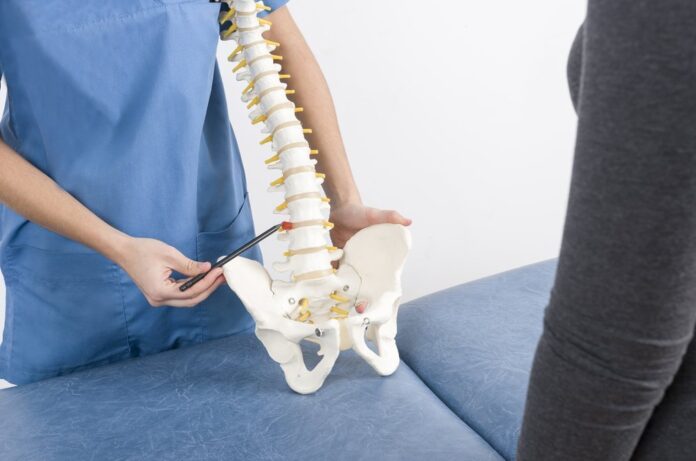The Hidden Impact of Poor Posture
Slouching at a desk, constantly checking phones, and performing repetitive tasks have become common habits. These patterns exert uneven stress on the spine, leading to small shifts that the body attempts to compensate for. Over time, these minor misalignments can cause muscle tension, joint fatigue, and strain, potentially decreasing flexibility.
Back discomfort is widespread—about 80% of adults will experience it during their lives, according to the American Chiropractic Association. Early signs, such as reduced movement or tension, often go unnoticed. Without attention, these issues can limit daily function and initiate a cycle of increased pain and new strains. Focused spinal care can help manage these early issues before they develop into larger problems.
Why a St George Chiropractic Expert Elevates Your Alignment
A spinal care specialist with formal chiropractic credentials can spot joint restrictions and patterns that limit nerve flow. Using a trained eye and careful assessment, the practitioner detects areas where joints move poorly, causing tightness or nagging pain. More than just finding sore spots, the specialist looks for shifts that disrupt the spine’s natural curves.
Targeted adjustments guide the spine back to its ideal position. These gentle, precise moves reduce strain on nerves, helping the body move and heal better. Restoring alignment doesn’t just relieve pain. Many find they sleep better because tense muscles relax. Some notice workouts feel smoother and daily movement easier, since nerves communicate freely.
For example, a teacher who used to wake up with a stiff neck can turn his head with less discomfort. An athlete may run with improved efficiency. A parent may bend and lift children with less effort. These improvements come from restoring the body’s ability to move as intended.
Key Techniques from St George Back Health Practitioners
Back health practitioners use a blend of methods based on individual needs. To bring relief and restore balance, a St George chiropractor often chooses from several trusted techniques:
High-velocity manipulation:
The practitioner applies a quick, controlled thrust to a specific joint. This technique targets tight or “stuck” areas, often producing a brief popping sound. The result? More mobility and reduced tension in the area.
Gentle mobilization:
This method uses slow, steady movements to encourage joints to move more freely. It’s ideal for those who need a lighter approach or have chronic stiffness. Improved circulation and less muscle guarding usually follow.
Soft-tissue therapy:
Here, focused pressure or stretching eases tension in muscles and connective tissues. The practitioner targets areas that feel ropey or knotted. As muscles relax, the spine moves more easily and everyday movements feel less restricted.
Instrument-assisted release:
Instead of hands, practitioners use small devices to apply gentle force to muscles or joints. This can help break down scar tissue, reduce swelling, and improve blood flow. People often notice less pain and more comfortable motion after treatment.
| Technique | What the Practitioner Does | How the Body Responds |
| High-velocity manipulation | Quick, targeted thrust to a joint | Freer movement, reduced pressure on nerves |
| Gentle mobilization | Slow, rhythmic passive movement | More range of motion, less stiffness |
| Soft-tissue therapy | Focused massage/stretching on sore muscles | Looser muscles, better flexibility |
| Instrument-assisted release | Precise tool-guided pressure on tissue/joints | Less swelling, smoother joint movement |
Each method aims for safe improvement in spinal movement and less nerve pressure. Together, they support overall comfort and function.
Integrating Spinal Wellness into Daily Routines
Small, daily habits can support the work of a spinal care specialist. Try these changes for better back health:
- Desk stretches:
Reach overhead or twist gently every 30–60 minutes. Helps break up stiffness. - Ergonomic cues:
Keep your monitor at eye level and both feet flat on the floor. Reduces neck and back strain. - Posture checks:
Use a mirror or the “doorway test.” Stand so your head, shoulders, and hips touch the wall. Keeps you aware of slouching. - Movement breaks:
Set a timer to stand or walk every hour. Prevents muscles from locking up. - Sleep posture tweaks:
Place a pillow under your knees if you sleep on your back, or between your knees if you’re on your side. Supports spinal curves overnight.
Consistent use of these habits prevents small issues from becoming chronic. Over time, these steps lead to better posture and less discomfort.
Measuring Progress: Tracking Your Pain Relief Journey
Tracking changes makes improvements easy to see. Try these simple self-checks:
- Use a pain-rating scale from 0 (no pain) to 10 (worst pain).
- Record mobility: Can you touch your toes? How far can you rotate your head?
- Keep a sleep journal with notes on nights you rest well or wake stiff.
Set clear, short-term targets—like improving fingertip reach by 10 degrees or lowering pain by two levels within two weeks. Bring these records to your spinal care specialist so adjustments can be matched to your progress. This makes care more effective and goal-oriented.
Stepping Forward: Your Next Move Toward Lasting Spine Comfort
Professional spinal care, combined with daily habits, helps restore pain-free movement and prevent future problems. Targeted adjustments align your body, while home routines reinforce these changes for lasting relief. Take the next step—consider an evaluation from a trained spinal care specialist for a plan that fits your needs. Your path to comfortable movement and better posture starts with simple, consistent actions.
Did you find this helpful? Check out our other helpful articles on our website.
Read Also
- The Future of Men’s Health: Why Telehealth Is Here to StayTelehealth isn’t just a pandemic trend that faded into the background. For Australian men, it has become one of the most practical, time-saving, and stress-free ways to manage everyday health — and it’s shaping the future of how we access care. Platforms like DOCTO, an Australian online doctor and specialist telehealth service, are leading the… Read more: The Future of Men’s Health: Why Telehealth Is Here to Stay
- How to Build a Simple, Clean Skincare Routine ?You don’t need a complicated skincare routine. It doesn’t have to be something that requires twenty different products and confusing steps. Your routine works well with just a few high-quality clean ingredients. The beauty industry keeps pushing more products, but your skin actually needs less. You only need a simple approach to get better results… Read more: How to Build a Simple, Clean Skincare Routine ?
- How Preventive Dental Care Supports Overall HealthHave you ever wondered how a simple dental checkup could impact your entire body? Oral health is more than just a bright smile. Studies show that poor dental habits can contribute to serious health problems. Gum disease and tooth decay are linked to heart disease, diabetes, and infections. Yet, many people overlook preventive dental care.… Read more: How Preventive Dental Care Supports Overall Health
- Seeing Clearly in a High-Tech World: A Deep Dive into Advanced Vision Care ServicesProtecting your eyesight isn’t optional—it’s essential. Modern eye care has evolved far beyond basic exams, offering advanced diagnostics, personalized treatments, and surgical innovations that keep vision sharp for life. A leading example is Intermountain Eye Center, home to specialists like Dr Fishburn Boise, where patients receive comprehensive, high-level vision care designed to preserve long-term eye… Read more: Seeing Clearly in a High-Tech World: A Deep Dive into Advanced Vision Care Services
- Why the Keto Diet Works for Some People—and Fails Dramatically for Others: An Ayurvedic Breakdown for Modern HealthcareThe keto diet has dominated weight-loss culture for years. For some people, it produces rapid fat loss, stable energy, and improved mental clarity. For others—especially those who gain weight easily—it leads to burnout, digestive distress, rebound weight gain, high cholesterol, and a metabolism that feels slower than before. Healthcare often frames this as a discipline… Read more: Why the Keto Diet Works for Some People—and Fails Dramatically for Others: An Ayurvedic Breakdown for Modern Healthcare
- How to Choose the Best Assisted Living Facility for SeniorsAre you looking for the right assisted living facility for a senior loved one? Choosing a place can feel overwhelming. There are many factors to consider, from care services to the environment. Safety, comfort, and social opportunities play important roles in daily life. Each senior has unique needs and preferences that must be met. Understanding… Read more: How to Choose the Best Assisted Living Facility for Seniors
- Burn Smart, Not Hard; Shape Burn: Clean Protein for Weight ManagementYou want to feel light, strong, and confident. You don’t want crash diets or fake promises. You need a plan that works with your body, not against it. That’s where Shape Burn comes in. You can burn fat without losing strength. You can eat better and stay full. You can manage weight in a way… Read more: Burn Smart, Not Hard; Shape Burn: Clean Protein for Weight Management
- Creatine Basics: How Much Is 5g, How Much Water You Need, and Whether Pills or Powder Work BetterIf you’ve ever walked into a supplement aisle or scrolled through fitness TikTok, you’ve probably seen people talking about creatine — usually with a shaker bottle in hand and promises of better workouts and faster gains. And honestly? They’re not wrong. Creatine is one of the most researched and effective supplements for muscle strength, recovery,… Read more: Creatine Basics: How Much Is 5g, How Much Water You Need, and Whether Pills or Powder Work Better









